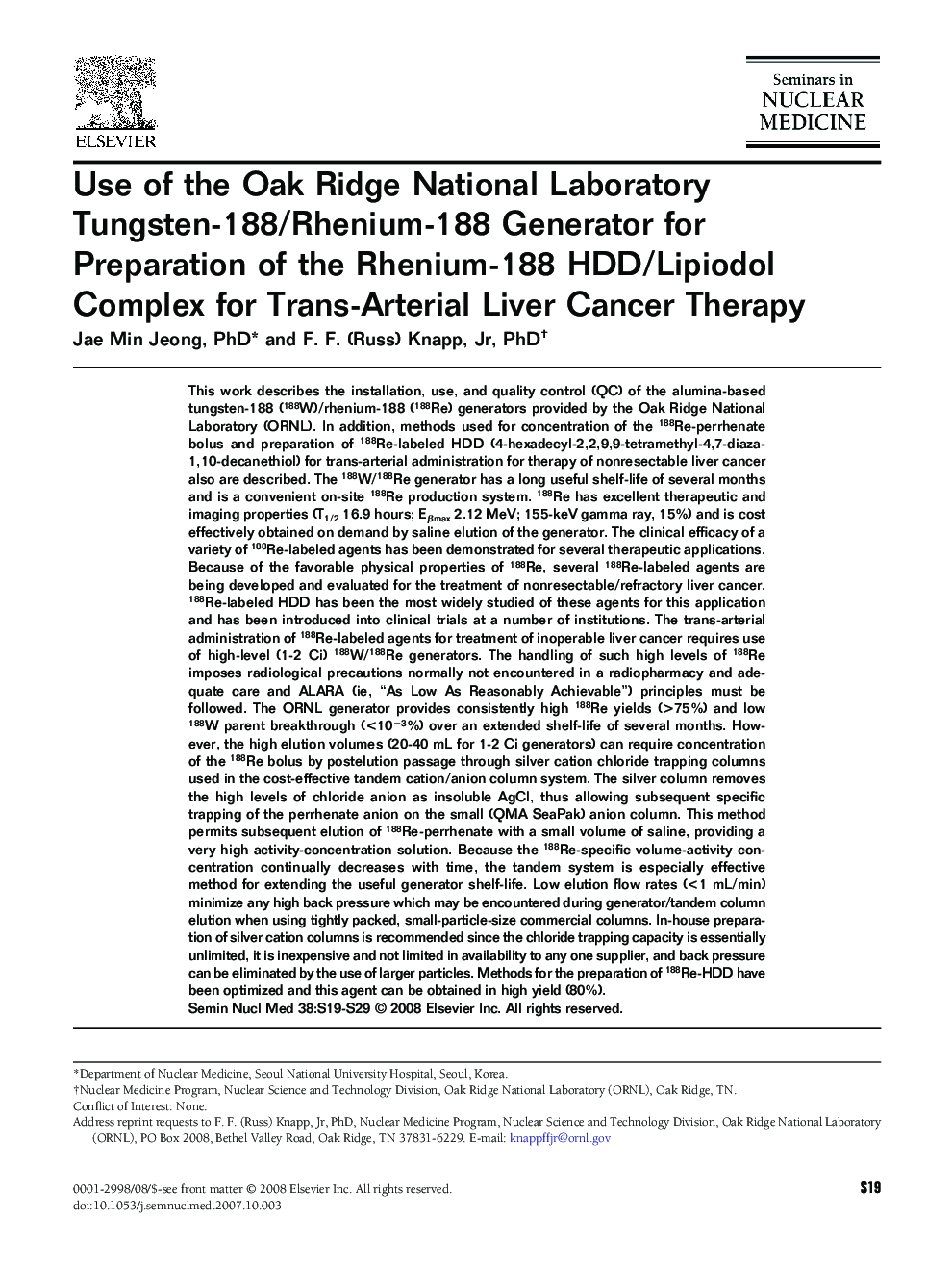| Article ID | Journal | Published Year | Pages | File Type |
|---|---|---|---|---|
| 4251159 | Seminars in Nuclear Medicine | 2008 | 11 Pages |
This work describes the installation, use, and quality control (QC) of the alumina-based tungsten-188 (188W)/rhenium-188 (188Re) generators provided by the Oak Ridge National Laboratory (ORNL). In addition, methods used for concentration of the 188Re-perrhenate bolus and preparation of 188Re-labeled HDD (4-hexadecyl-2,2,9,9-tetramethyl-4,7-diaza-1,10-decanethiol) for trans-arterial administration for therapy of nonresectable liver cancer also are described. The 188W/188Re generator has a long useful shelf-life of several months and is a convenient on-site 188Re production system. 188Re has excellent therapeutic and imaging properties (T1/2 16.9 hours; Eβmax 2.12 MeV; 155-keV gamma ray, 15%) and is cost effectively obtained on demand by saline elution of the generator. The clinical efficacy of a variety of 188Re-labeled agents has been demonstrated for several therapeutic applications. Because of the favorable physical properties of 188Re, several 188Re-labeled agents are being developed and evaluated for the treatment of nonresectable/refractory liver cancer. 188Re-labeled HDD has been the most widely studied of these agents for this application and has been introduced into clinical trials at a number of institutions. The trans-arterial administration of 188Re-labeled agents for treatment of inoperable liver cancer requires use of high-level (1-2 Ci) 188W/188Re generators. The handling of such high levels of 188Re imposes radiological precautions normally not encountered in a radiopharmacy and adequate care and ALARA (ie, “As Low As Reasonably Achievable”) principles must be followed. The ORNL generator provides consistently high 188Re yields (>75%) and low 188W parent breakthrough (<10−3%) over an extended shelf-life of several months. However, the high elution volumes (20-40 mL for 1-2 Ci generators) can require concentration of the 188Re bolus by postelution passage through silver cation chloride trapping columns used in the cost-effective tandem cation/anion column system. The silver column removes the high levels of chloride anion as insoluble AgCl, thus allowing subsequent specific trapping of the perrhenate anion on the small (QMA SeaPak) anion column. This method permits subsequent elution of 188Re-perrhenate with a small volume of saline, providing a very high activity-concentration solution. Because the 188Re-specific volume-activity concentration continually decreases with time, the tandem system is especially effective method for extending the useful generator shelf-life. Low elution flow rates (<1 mL/min) minimize any high back pressure which may be encountered during generator/tandem column elution when using tightly packed, small-particle-size commercial columns. In-house preparation of silver cation columns is recommended since the chloride trapping capacity is essentially unlimited, it is inexpensive and not limited in availability to any one supplier, and back pressure can be eliminated by the use of larger particles. Methods for the preparation of 188Re-HDD have been optimized and this agent can be obtained in high yield (80%).
